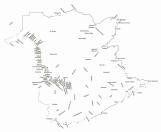1
A railway through the St. John River valley and into Central Canada had long been seen by New Brunswickers as the obvious place to build a rail connection with the rest of Canada. A railway following that route would pass through populated towns bustling with manufacturing. Residents of the area had always relied on the river to transport goods, but the river is only navigable by large ships during the spring months and using the other railways in New Brunswick was not economically feasible. Both the St. Andrews and Quebec Railway and Intercolonial Lines were too far away and even the Western Extension only had connections at Fredericton and Saint John. These connections were not economically feasible to be used by residents and business of other communities along the river. People in other communities further up the river had to pay to ship goods to Fredericton or Saint John before they could be sent by rail and most small business could not afford this extra expense. In 1870 a group of local businessmen led by Alexander "Boss" Gibson organized the New Brunswick Land and Railway Company to begin construction of a line along the north side of the St. John River. This line would tap into the markets from Fredericton to Woodstock and further up the river to Grand Falls and Edmundston. Gibson personally invested heavily in the line because he saw the line as a reliable way for him to move timber products from his mill to market. By 1873 track had been laid from Gibson through Fredericton and onto Newburg. In 1876 the line was completed to Aroostook and a branch line was built to connect the line with the Aroostook River Railroad. Finally in 1878 the line was completed to Edmundston. The line was never completed to Montreal, although a connection from Edmundston to Riviere-du-Loup was opened by the Temiscouata Railway in 1889. Until then producers were forced to send their goods over the Intercolonial Railway or through Maine to Montreal. Both routes added so much extra transit time and cost that they were not economically feasible. At the same time trade with the United States was restricted by the National Policy which was designed to promote trade within Canada by raising tariffs on goods exported to the United States. In 1882 the company was reorganized as the New Brunswick Railway Company with John H. Pope, the head of Canadian Pacific Railways, as the largest shareholder. The New Brunswick Railway then began acquiring control of other railway lines in the Province, all of which would eventually become part of the Canadian Pacific Railway system. In 1890 the Canadian Pacific Railway acquired the lease rights for the New Brunswick Railway Company and all of its branch lines.3
City of Fredericton railway lines19th Century
Fredericton, New Brunswick, Canada
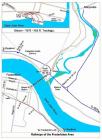 Credits:
Credits:New Brunswick Railway Museum
4
Woodstock Station20th Century
Woodstock, New Brunswick, Canada
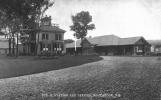 Credits:
Credits:New Brunswick Railway Museum
5
Newburg Station20th Century, Circa 1908
Newburg, New Brunswick, Canada
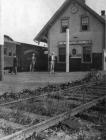 Credits:
Credits:New Brunswick Railway Museum
6
Gibson Station20th Century, Circa 1916
Gibson, New Brunswick, Canada
 Credits:
Credits:New Brunswick Railway Museum
7
Aroostook Station20th Century, Circa 1915
Aroostook, New Brunswick, Canada
 Credits:
Credits:New Brunswick Railway Museum
8
Grand Falls CPR Station20th Century, Circa 1990
Grand Falls, New Brunswick, Canada
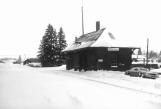 Credits:
Credits:New Brunswick Railway Museum
9
Grand Falls CNR Station19 December 1986
Grand Falls, New Brunswick, Canada
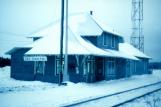 Credits:
Credits:New Brunswick Railway Museum
10
Perth Junction Station20th Century
Perth-Andover, New Brunswick, Canada
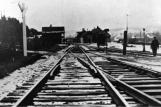 Credits:
Credits:New Brunswick Railway Museum
11
St. Leonard CPR Station20th Century, Circa 1910
St. Leonard, New Brunswick, Canada
 Credits:
Credits:New Brunswick Railway Museum
